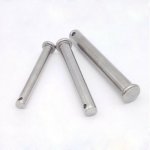Zip
Aluminum
- Joined
- May 25, 2007
- Location
- Champlain, NY
I'm looking to ensure that two pieces of aluminum stock return to their original position after being shifted (right/left about 1/8") (handgun site base).
Is there a tool bit (and screw) that will accomplish what I have in my rough drawing. Looking for an alignment rod hole in the 0.138-0.164 range.
Thanks
View attachment baseLOCK.BMP
Is there a tool bit (and screw) that will accomplish what I have in my rough drawing. Looking for an alignment rod hole in the 0.138-0.164 range.
Thanks
View attachment baseLOCK.BMP



